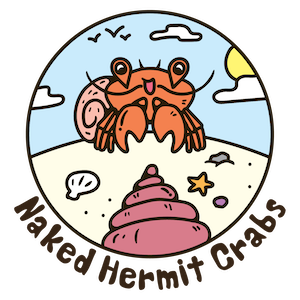I had a group of Temasek Poly students with me on the adventure trail, and we wasted no time (ok ok, except that they were a little late and we had a quick toilet break) in getting to the wild shores.
And one of the first few things that caught my eyes was this lump of sand.

This was the cast made by an acorn worm. In fact, you can still see part of the worm! Look at the yellowish thing in the middle. That's the tail-end of the worm.
The acorn worm has a front-end shaped like an acorn, with gives it its common name. It feeds by swallowing the sand which contains organic particles. At low tide, it will stick out its rear end and push out the processed sand.
At the edge of the water, we saw this pretty sea anemone.

But higher up on the sandy shores, we found 2 of these bigger-than-your-face carpet anemone.

These anemones have sticky tentacles with stinging cells to paralyse animals that blundered into them. The tentacles will then move the prey into the mouth at the centre.
There was also a huge patch of branching corals.

Branching corals are colonial animals. Each "branch" above has lots of tiny holes, and each hole has a tiny little coral animal!
The adventure trail also brought us to the rocky shores, and on the rocks were many little animals, including this cute little onch slug.

The onch slugs looked just like the rocks they were on, and thus we had to be very careful when we walked around, so as not to step onto them.
Other than slugs, we have their close relatives - the snails too.

The snail above is a turban snail, which has a very pretty and thick trap door, which protects the snail from predators and dehydration.
On one side of the rocky shore was a spectacular cliff with lots of interesting rock formations. Here's a rock with a beautiful quartz vein embedded in it.

And everytime I walked past the beacon, I would wonder when it will collapse.
And here's a group shot taken with the lovely pink cliffs.

The reddish tint on the cliff came from oxidised iron in the rocks.
There are also many tidal pools on the rocky shore, and here's two of my participants looking into one of them.

In one of the tidal pools, we actually found 2 black sea cucumbers.

While it appeared soft and weak, this sea cucumber was not totally defenceless. It can actually eject sticky threads to confuse its predators.
And apart from animals, we have many interesting plants too, including this Raffles pitcher plant.

Pitcher plants have leaves that form containers. The sweet liquid in the container attracts insects and other little animals, which often end up as alternative sources of nutrients for the plant then they dropped into the plant's pitchers.
We soon reached the lagoon area, which had more intertidal life waiting for us, including this beautiful fanworm.

These worms live in flexible, leathery tubes, and feathery fan that we see is stuck on the top of the worm's head. The worm uses the "fan" to create a little current to collect tiny edible particles from the water.
At the lagoon, we also managed to take a closer look at the tiny coral polyps of the omelette leathery soft coral.

Unlike the branching hard corals we saw earlier, soft corals do not have hard skeletons, but instead, the polyps are connected by a soft tissue mass.
We soon reached the hunter-seekers stations, and Ria's group ws already there.

The seekers have found lots of interesting things, including this beautiful nudibranch.

It is a marginated glossodoris nudibranch.
Some of the people also spotted a monitor lizard.

And here's another group shot in front of a natural cave before we left this lovely shore.

Indeed, it's been a great day - lovely weather, and fun participants. I'm certainly looking forward to guide more people to our wonderful shores!
And thanks to all the NHCS who helped out - Ria, Marcus, LK, July, Ivan, Andy and Robert!

No comments:
Post a Comment